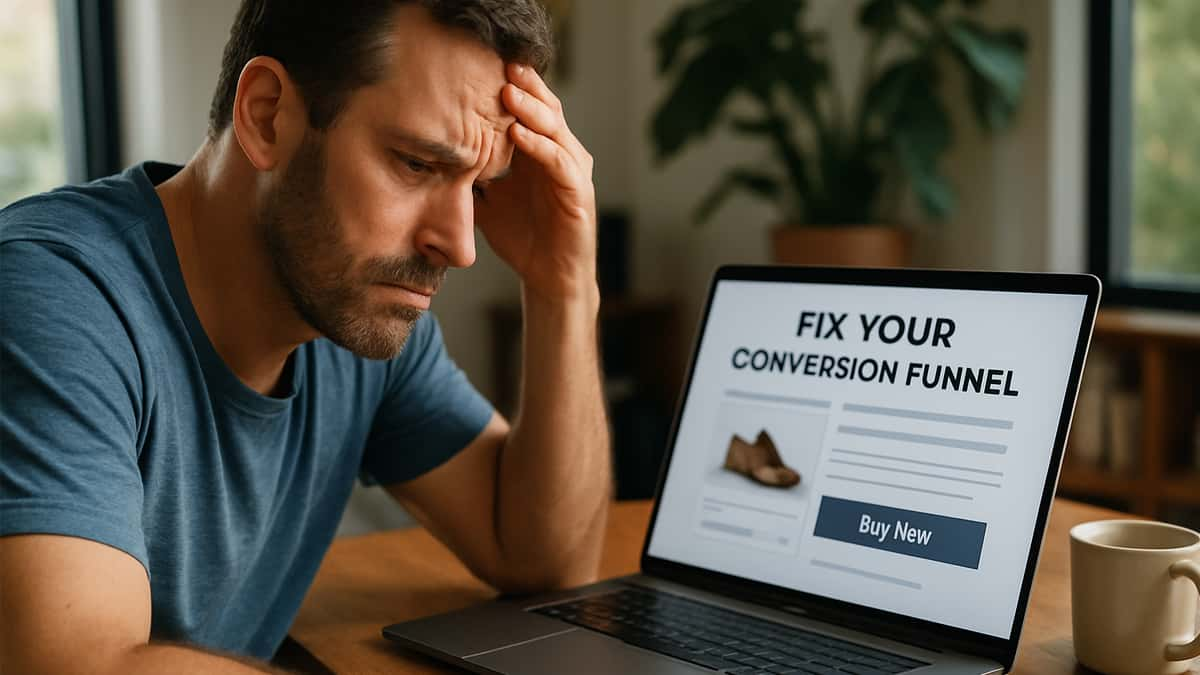There is no shortage of online sellers blaming social media platforms for poor results. The usual complaints like lost traffic, fewer clicks, and shrinking visibility sound familiar to anyone who has spent time in eCommerce. But more often than not, the problem is not the algorithm. It is the conversion funnel.
A conversion funnel is simply the path a customer takes from curiosity to purchase. They see your content, click through to your site, and ideally buy something. It sounds simple, but building one that works is anything but. Every small obstacle such as slow load times, confusing headlines, or cluttered layouts pushes potential buyers away before they ever reach the checkout page.
The Real Problem Isn’t Traffic. It’s Conversion.
Many sellers spend months chasing visibility while ignoring what happens after a click. High bounce rates, abandoned carts, and low engagement usually signal a broken funnel, not an unfair algorithm. When more than 70 percent of visitors leave immediately, that is not bad luck. It is poor user experience.
Instead of refreshing analytics dashboards or running new ad campaigns, start by diagnosing your site. Look at where visitors exit, where pages slow down, and where confusion creeps in. These data points reveal what is really stopping sales.
Make the Buying Process Effortless
A good conversion funnel feels effortless. Customers should not have to think about what to do next. The most successful product pages make their message clear in seconds and guide shoppers smoothly toward the checkout.
If a visitor needs to click through multiple pages, scroll endlessly, or guess where the “Buy Now” button is, you are losing revenue. Streamline navigation, simplify forms, and make sure every page loads quickly on both desktop and mobile.
How to Turn a Broken Funnel into a High-Converting One
Improving your funnel is not about adding flashy design elements or clever taglines. It is about clarity, flow, and understanding your audience. Here is how to rebuild your process for real-world performance:
1. Identify Drop-Off Points Early
Review your analytics to find where customers lose interest. If most abandon their session within a few seconds, focus on your landing page. Simplify text, increase load speed, and make your offer crystal clear.
2. Reduce Friction at Checkout
Every extra step between “Add to Cart” and “Order Confirmed” lowers your conversion rate. Remove unnecessary fields and combine steps where possible. A single-page checkout that works perfectly on mobile can increase completed purchases dramatically.
3. Test the Entire Journey
Do not rely on assumptions. Go through your site as if you were a new visitor. Does the path make sense? Can you find what you are looking for in under a minute? The smallest obstacle like a missing button or unclear message can stop a sale instantly.
4. Ask for Real Feedback
Invite a few unbiased testers to go through your buying process without any instruction. Observe where they hesitate, what confuses them, and which parts they skip. You will learn more from ten minutes of observation than hours of guessing.
5. Focus on Clarity Over Creativity
Complex marketing language might sound impressive, but it rarely sells. Replace vague slogans with direct benefits. “Keeps drinks hot for 12 hours” tells customers exactly what they need to know. The clearer the value, the faster they buy.
Conversion Optimization Is About Execution, Not Excuses
The truth is simple. A well-designed funnel converts traffic from any source, algorithm or not. When the customer experience is smooth, your ads perform better, your bounce rates drop, and your sales grow organically.
Instead of blaming social media platforms, invest time into refining your process. Audit your site weekly, test new versions of pages, and keep improving based on real behavior, not guesses.
When your funnel works efficiently, algorithms stop being an obstacle and start being a traffic source you can actually profit from.
Because it is never the algorithm’s job to fix your business. It is yours.

